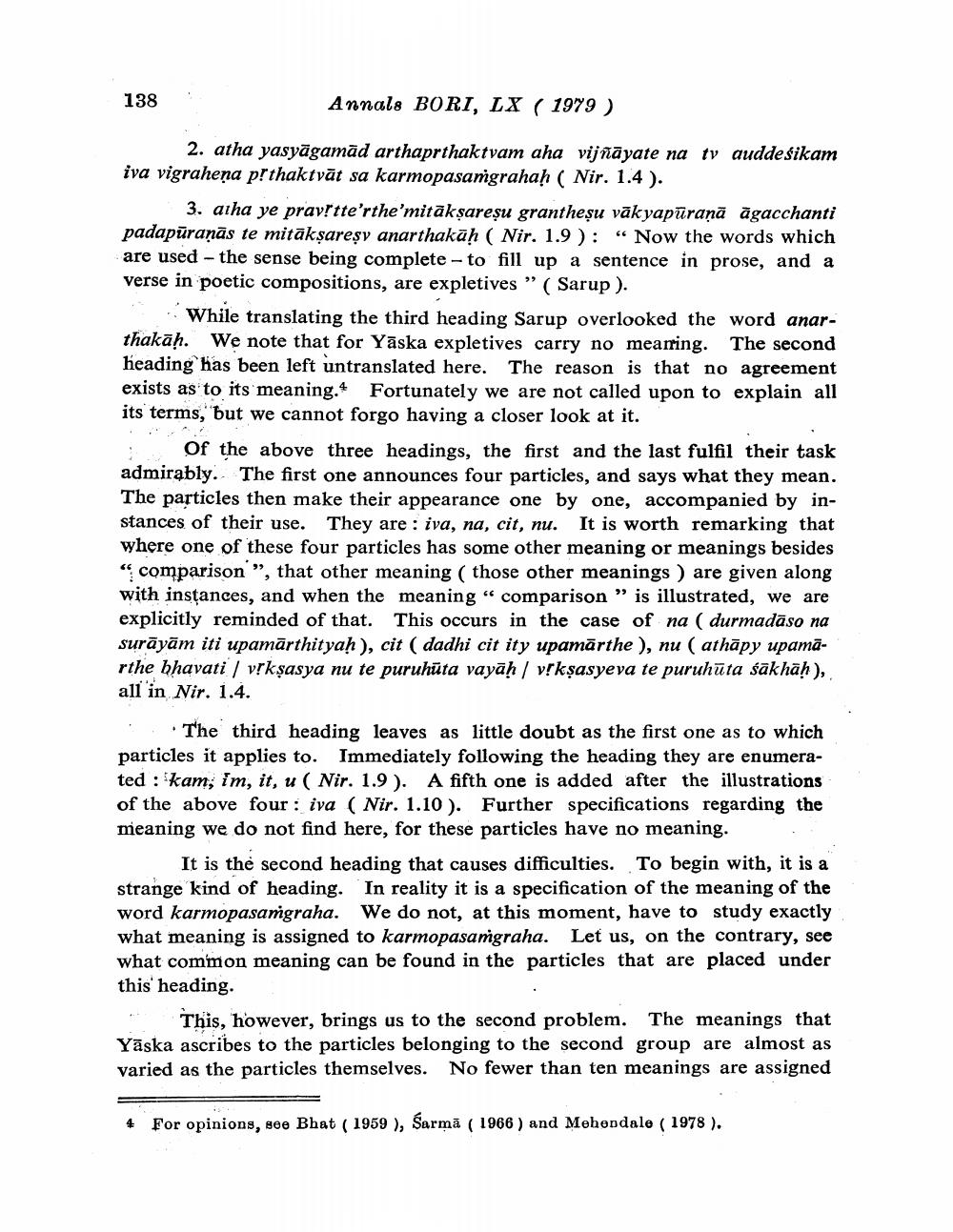Book Title: Yaskas Classification Of Nipatas Author(s): Johannes Bronkhorst Publisher: Johannes Bronkhorst View full book textPage 2
________________ 138 Annals BORI, LX ( 1979 ) 2. atha yasyāgamād arthaprthaktvam aha vijñāyate na tv auddesikam iva vigrahena pļ thaktvāt sa karmopasangrahaḥ ( Nir. 1.4). 3. atha ye prav!tte'rthe'mitāk sareşu grantheşu vāk yapūraņā ägacchanti padapūraņās te mitākşareșy anarthakāh ( Nir. 1.9): “Now the words which are used - the sense being complete - to fill up a sentence in prose, and a verse in poetic compositions, are expletives” (Sarup ). While translating the third heading Sarup overlooked the word anarthakāḥ. We note that for Yāska expletives carry no meaning. The second heading has been left untranslated here. The reason is that no agreement exists as to its meaning. Fortunately we are not called upon to explain all its terms, but we cannot forgo having a closer look at it. Of the above three headings, the first and the last fulfil their task admirably. The first one announces four particles, and says what they mean. The particles then make their appearance one by one, accompanied by instances of their use. They are: iva, na, cit, nu. It is worth remarking that where one of these four particles has some other meaning or meanings besides "comparison”, that other meaning ( those other meanings ) are given along with instances, and when the meaning " comparison ” is illustrated, we are explicitly reminded of that. This occurs in the case of na (durmadāso na surāyām iti upamārthityah), cit ( dadhi cit ity upamārthe ), nu ( athāpy upamārthe bhavati / vrkşasya nu te puruhūta vayāḥ / vrkşasyeva te puruhūta sākhah), all in Nir. 1.4. The third heading leaves as little doubt as the first one as to which particles it applies to. Immediately following the heading they are enumerated : kam, im, it, u ( Nir. 1.9). A fifth one is added after the illustrations of the above four: iva (Nir. 1.10 ). Further specifications regarding the meaning we do not find here, for these particles have no meaning. It is the second heading that causes difficulties. To begin with, it is a strange kind of heading. In reality it is a specification of the meaning of the word karmopasangraha. We do not, at this moment, have to study exactly what meaning is assigned to karmopasamgraha. Let us, on the contrary, see what common meaning can be found in the particles that are placed under this heading. ** This, however, brings us to the second problem. The meanings that Yaska ascribes to the particles belonging to the second group are almost as varied as the particles themselves. No fewer than ten meanings are assigned 4 For opinions, see Bhat ( 1959 ), Sarmā ( 1966 ) and Mehondale ( 1978 ).Page Navigation
1 2 3 4 5 6 7 8 9 10 11 12 13
